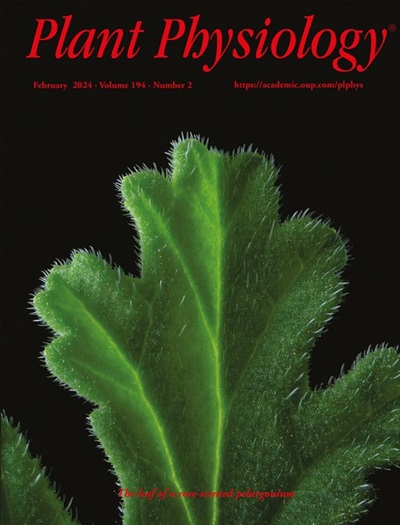How coat proteins shape autophagy in plant cells
IF 6.5
1区 生物学
Q1 PLANT SCIENCES
引用次数: 0
Abstract
Autophagy is a membrane trafficking pathway through which eukaryotic cells target their own cytoplasmic constituents for degradation in the lytic compartment. Proper biogenesis of autophagic organelles requires a conserved set of autophagy-related (ATG) proteins and their interacting factors, such as signalling phospholipid phosphatidylinositol 3-phosphate (PI3P) and coat complex II (COPII). The COPII machinery, which was originally identified as a membrane coat involved in the formation of vesicles budding from the endoplasmic reticulum, contributes to the initiation of autophagic membrane formation in yeast, metazoan, and plant cells; however, the exact mechanisms remain elusive. Recent studies using the plant model species Arabidopsis thaliana have revealed that plant-specific PI3P effectors are involved in autophagy. The PI3P effector FYVE2 interacts with the conserved PI3P effector ATG18 and with COPII components, indicating an additional role for the COPII machinery in the later stages of autophagosome biogenesis. In this Update, we examined recent research on plant autophagosome biogenesis and proposed working models on the functions of the COPII machinery in autophagy, including its potential roles in stabilizing membrane curvature and sealing the phagophore.衣壳蛋白如何影响植物细胞的自噬作用
自噬是一种膜转运途径,真核细胞通过自噬将自身的细胞质成分在溶解区降解。自噬细胞器的正常生物生成需要一组保守的自噬相关(ATG)蛋白及其相互作用因子,如信号磷脂磷脂酰肌醇 3-磷酸(PI3P)和外皮复合体 II(COPII)。COPII 机制最初被认为是一种膜衣,参与了从内质网出芽的囊泡的形成,在酵母、元类动物和植物细胞中有助于自噬膜形成的启动;然而,其确切的机制仍然难以捉摸。最近利用植物模式物种拟南芥(Arabidopsis thaliana)进行的研究发现,植物特异性 PI3P 效应子参与了自噬。PI3P 效应子 FYVE2 与保守的 PI3P 效应子 ATG18 以及 COPII 成分相互作用,表明 COPII 机制在自噬体生物发生的后期阶段发挥了额外的作用。在《最新进展》中,我们考察了最近关于植物自噬体生物发生的研究,并就 COPII 机器在自噬中的功能提出了工作模型,包括其在稳定膜曲率和密封吞噬体方面的潜在作用。
本文章由计算机程序翻译,如有差异,请以英文原文为准。
求助全文
约1分钟内获得全文
求助全文
来源期刊

Plant Physiology
生物-植物科学
CiteScore
12.20
自引率
5.40%
发文量
535
审稿时长
2.3 months
期刊介绍:
Plant Physiology® is a distinguished and highly respected journal with a rich history dating back to its establishment in 1926. It stands as a leading international publication in the field of plant biology, covering a comprehensive range of topics from the molecular and structural aspects of plant life to systems biology and ecophysiology. Recognized as the most highly cited journal in plant sciences, Plant Physiology® is a testament to its commitment to excellence and the dissemination of groundbreaking research.
As the official publication of the American Society of Plant Biologists, Plant Physiology® upholds rigorous peer-review standards, ensuring that the scientific community receives the highest quality research. The journal releases 12 issues annually, providing a steady stream of new findings and insights to its readership.
 求助内容:
求助内容: 应助结果提醒方式:
应助结果提醒方式:


